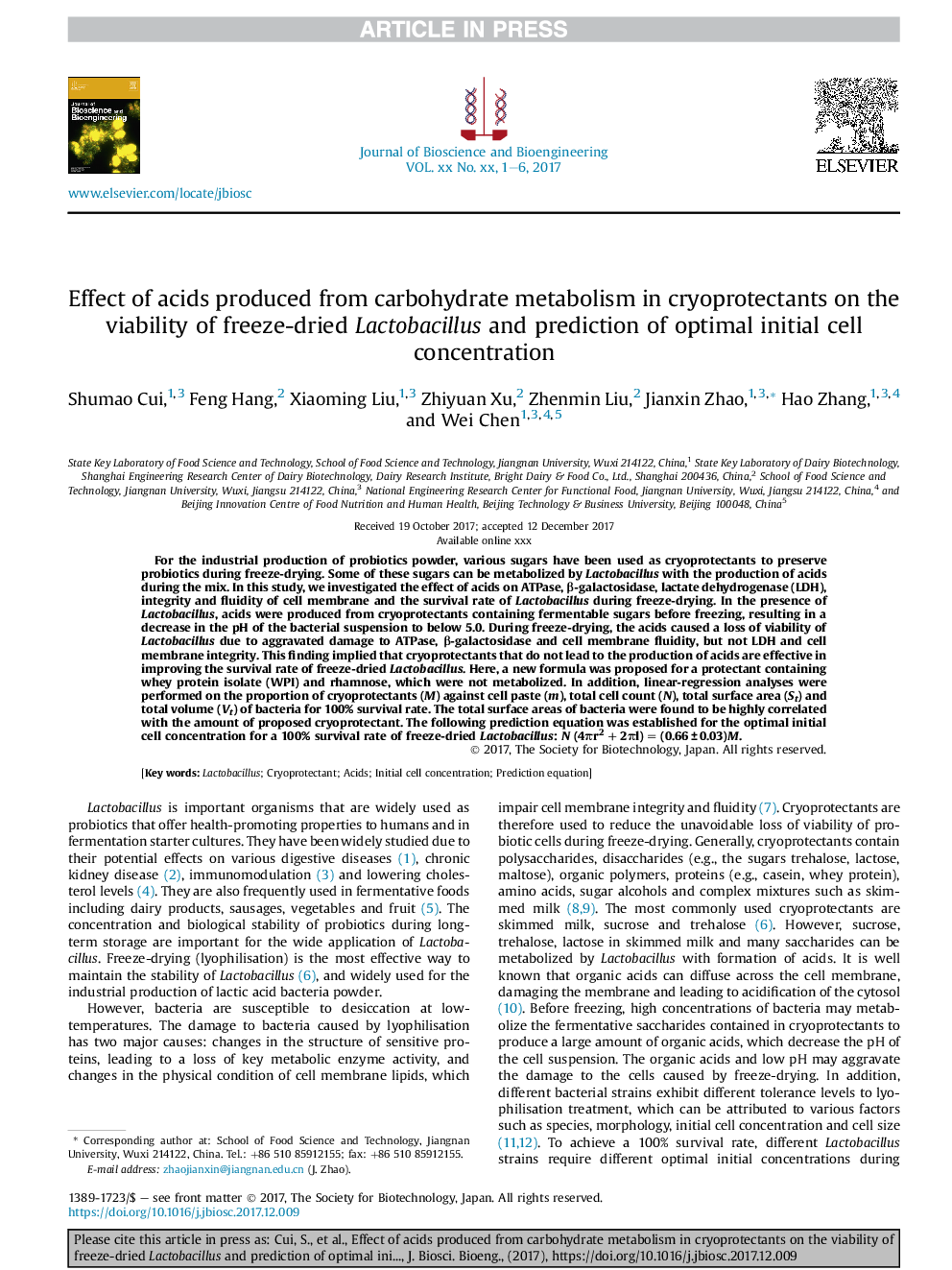| Article ID | Journal | Published Year | Pages | File Type |
|---|---|---|---|---|
| 6489798 | Journal of Bioscience and Bioengineering | 2018 | 6 Pages |
Abstract
For the industrial production of probiotics powder, various sugars have been used as cryoprotectants to preserve probiotics during freeze-drying. Some of these sugars can be metabolized by Lactobacillus with the production of acids during the mix. In this study, we investigated the effect of acids on ATPase, β-galactosidase, lactate dehydrogenase (LDH), integrity and fluidity of cell membrane and the survival rate of Lactobacillus during freeze-drying. In the presence of Lactobacillus, acids were produced from cryoprotectants containing fermentable sugars before freezing, resulting in a decrease in the pH of the bacterial suspension to below 5.0. During freeze-drying, the acids caused a loss of viability of Lactobacillus due to aggravated damage to ATPase, β-galactosidase and cell membrane fluidity, but not LDH and cell membrane integrity. This finding implied that cryoprotectants that do not lead to the production of acids are effective in improving the survival rate of freeze-dried Lactobacillus. Here, a new formula was proposed for a protectant containing whey protein isolate (WPI) and rhamnose, which were not metabolized. In addition, linear-regression analyses were performed on the proportion of cryoprotectants (M) against cell paste (m), total cell count (N), total surface area (St) and total volume (Vt) of bacteria for 100% survival rate. The total surface areas of bacteria were found to be highly correlated with the amount of proposed cryoprotectant. The following prediction equation was established for the optimal initial cell concentration for a 100% survival rate of freeze-dried Lactobacillus: N (4Ïr2 + 2Ïl) = (0.66 ± 0.03)M.
Related Topics
Physical Sciences and Engineering
Chemical Engineering
Bioengineering
Authors
Shumao Cui, Feng Hang, Xiaoming Liu, Zhiyuan Xu, Zhenmin Liu, Jianxin Zhao, Hao Zhang, Wei Chen,
